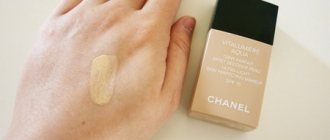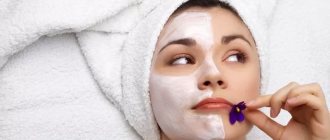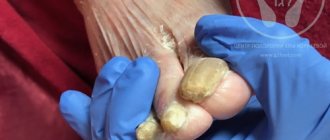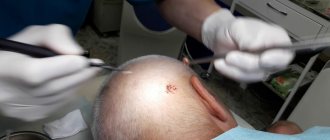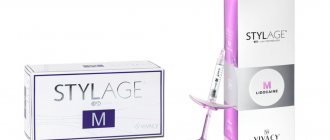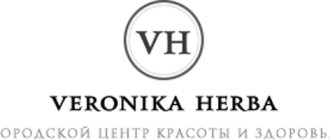In stores you can find cosmetics with various sun protection factors - from SPF 4 to SPF 50.
Therefore, modern women are often concerned with questions: what is SPF, what protection factor should a product have, how to choose and use sunscreen correctly?
- The benefits and harms of the sun and tanning
- Sun protection
- Skin phototypes according to Fitzpatrick
- What is SPF
- Degree of protection
- My favorite sunscreen 2020
- How to choose sunscreen
- Ultraviolet Index (UVI)
- My recommendations for residents of Russia and Ukraine
- Mistakes of using sunscreen with SPF
- Chemical peels, acids, retinol
- SPF, makeup and questions answered
The benefits and harms of tanning
Just a hundred years ago, in high society there was a cult of snow-white skin, and even men wore wide-brimmed hats, and ladies used hats, gloves and sun umbrellas - just to protect their skin from tanning.
But in the 20s of the last century, Coco Chanel introduced a fashion for tanning, and the situation changed dramatically. It has become popular to relax on the seaside, and tanning has become a symbol of a beautiful life.
However, over time, doctors sounded the alarm. It turned out that excessive tanning is not very good for health - the number of skin cancer cases has increased, and in addition, it has been proven that sun rays cause photoaging and can accelerate the natural aging of the skin.
The general craze for tanning has been replaced by the widespread use of sunscreens with a super high degree of protection SPF 100, as well as a new mental disorder - heliophobia - an obsessive fear and fear of being in the sun.
But despite this, the situation with health and photoaging has not improved, but, on the contrary, has worsened. And some experts believe that the reason for this is the widespread use of sunscreens. Or rather, their incorrect use.
Benefits of the sun
We need a moderate amount of sunlight for our health, for the beauty of our skin, and for a good mood.
- When exposed to sunlight, our body produces vitamin D, which is necessary for bone formation.
- With a lack of ultraviolet radiation, collagen synthesis decreases, which leads to sagging skin and the appearance of wrinkles.
- The sun's rays promote the production of happiness hormones, improve mood and strengthen the immune system.
In other words, it is not ultraviolet radiation itself that is harmful, but its excess.
Sun protection
How to protect yourself from excessive exposure to sunlight? First of all, you need to limit your time in the sun and not sunbathe between 10 a.m. and 4 p.m.
Nature has given us a great built-in mechanism for limiting sun exposure. If you overdo it, an ordinary white person becomes red as a lobster, and in the worst case, even covered in blisters.
But when we use sunscreen, we lose this natural control and our alertness decreases accordingly. Filters that protect us from spectrum B rays prevent us from getting too burned. Therefore, a modern person often lies on the beach for 2-3 hours in the heat of the day and does not get blisters, which is naturally incredibly happy!
And, of course, there is nothing to be happy about. No sunscreen provides 100% protection from excessive sun exposure. In other words, a cream with SPF is not designed to make us lie on the beaches longer, but to enhance protection during forced long periods of exposure to the sun.
All about the sun's UVA and UVB rays
In order to understand which product is right for you, you need to understand a little about the nature of the sun's rays.
The radiation that comes from the sun comes in 3 spectrums. These are A (UVA), B (UVB) and C (UVC) rays. Each of them is dangerous in its own way. Our body is affected only by A and B rays. UVC radiation does not pass through the ozone layer.
Now let's look at the negative consequences each radiation brings.
- A - these are the safest rays. Thanks to them, we get that desired bronze tan. However, when UVA rays affect the skin, they dry it out greatly, causing wrinkles and freckles to appear, and the aging process of the skin begins. Sometimes this radiation causes sun allergies.
- B – carries an average level of threat to the human body. These rays trigger the production of melanin, which protects the skin from burns. Excessive sun exposure can cause UVB radiation to cause burns, itchy skin, blistering and the formation of cancer cells.
- C is the most dangerous radiation. It causes cancer.
Before purchasing cosmetic products, pay attention to the labeling. Give preference to products with the UVA / UVB . This means that the selected cream, lotion, spray, etc. will protect your skin from A and B radiation.
Skin phototypes according to Fitzpatrick
There is such a thing as a minimum erythemal dose - this is the dose of solar radiation that causes minimal visible redness of the skin. This dose is individual and depends on the phototype.
All people are divided into 6 phototypes depending on skin color:
- Celtic type - never tan, always burn - fair skin, often with freckles, red or blonde, light eyes.
- European Nordic type - sometimes tan, but more often get sunburned - fair-skinned, light brown hair, sometimes dark brown, light eyes.
- Central European type - tan well, sometimes burn - brown or light eyes, dark brown or brown hair and ivory skin without freckles.
- Mediterranean type - tan well, never burn, dark eyes, dark hair and dark skin without freckles.
- Indonesian or Oriental type - always tan, never burn - dark skin, dark hair and eyes.
- African - never burns - very dark skin, black hair and eyes.
What is SPF
SPF is the Sun Protection Factor (SPF), which measures how long you can sit in the sun before getting sunburned. Or, to be more precise, how many times does the minimum erythemal dose increase when using a given sunscreen.
For example, if without sunscreen your skin usually turns red after 5 minutes at the beach, then using a product with SPF 10 can prevent you from getting sunburned for up to 50 minutes.
Of course, these numbers are very arbitrary and give only a rough idea of how protected you are from spectrum B rays, which cause erythema (redness of the skin) and sunburn.
However, SPF does not indicate how protected you are from spectrum A rays. These rays are more insidious - they do not cause redness or any discomfort, but penetrate deep into the skin and contribute to photoaging.
And although many modern sunscreens contain both physical and chemical filters that protect against both Spectrum A and Spectrum B rays, it is still not known for certain whether photoaging can be completely prevented with the help of sunscreens.
So the most reliable protection against excessive exposure to sunlight to this day is to limit exposure to the sun!
Degree of protection
What degree of protection do products with SPF provide? Conventionally, sunscreens are divided into the following groups:
- SPF 2-4 – basic protection, protects from 50-75% UV
- SPF 4-10 – medium level of protection, protects from 85% UV
- SPF 10-20 – high degree of protection, protects against 95% UV
- SPF 20-30 - intense protection, protects against 97% UV
- SPF 50 – sanitary block, protects from 99.5% UV
That is, the difference between a cream with SPF 30 and SPF 50 is very insignificant. And products with SPF above 50 today no longer meet modern standards.
Composition of sunscreen
Modern sunscreens usually contain both physical and chemical filters.
Physical filters create a screen and thus reflect the sun's rays of spectrum B. In sunscreen formulations you can find filters such as:
- Titanium dioxide
- Zinc oxide
Chemical filters adsorb ultraviolet rays. These include:
- Tinosorb S (Bis-Ethylhexyloxyphenol Methoxyphenyl Triazine)
- Avobenzone (butyl methoxydibenzoylmethane)
- Benzophenone and others
The dangers of sunscreens
As you probably already guessed, there are different degrees of protection for a reason and you need to choose products not with the maximum, but with the optimal SPF. Optimal for you.
Because sunscreen filters in large quantities can themselves have harmful effects on the skin.
For example, chemical filters can cause allergic reactions, and physical filters can provoke an exacerbation of acne.
Potentially dangerous filters:
- Benzophenone-3 (benzophenone-3), also known as oxybenzone
. It has a huge number of safety issues, but is nevertheless allowed in Russia, the USA and a number of other countries, and in Europe it is allowed in a reduced concentration.
So, what is benzophenone-3 “blamed” for:
In 2014, it was recognized as Allergen of the Year by the American Contact Dermatitis Society (ACDS). There is data
that it negatively affects the endocrine and reproductive systems, and that it is capable of breaking down into toxic compounds upon contact with chlorinated water.
Other studies have found changes in hormonal levels and uterine size, but the experiment was conducted on mice. If we transfer the results to humans, then for the listed changes in the body it is necessary to apply the cream daily to the entire body for 34 years or more.
- Octocrylene
According to the study
, published in the scientific journal Chemical Research in Toxicology, over time it is able to turn into benzophenone and have its toxic effects. Researchers established this fact after an experiment in which 16 creams with octocrylene “participated.”
Firstly, chemical analysis showed that octocrylene initially contained an admixture of benzophenone, which was not declared in the composition. Concentrations ranged from 6 to 186 mg/kg. Secondly, it turned out that if immediately after production the concentration of benzophenone in the cream is low, then after about a year of storage the amount of the toxic compound increases significantly (the minimum detected concentration was 9.8 mg/kg, the maximum was 435 mg/kg).
Moreover, in 2022, the European Academy of Dermatology and Venereology reported that when used in a concentration of up to 10%, octocrylene does not cause hormonal disorders.
There is evidence of possible allergic reactions.
- Avobenzone, also known as butyl methoxydibenzoylmethane
A component with unproven safety; moreover, it decomposes when exposed to sunlight: it loses 36% of its protective properties within an hour. Scientists from Moscow State University have discovered
that upon contact with chlorinated water, the filter breaks down into harmful chemical compounds. It is also credited with a negative effect on the endocrine system, etc.
Cream with this component must be updated regularly. Avobenzone and its breakdown products can cause allergies. Capable of penetrating into the blood at a concentration of 1.8–4.3 ng/ml with a standard (established by the FDA) of no more than 0.5 ng/ml.
- Ethylhexyl methoxycinnamate, also known as octyl methoxycinnamate, also known as octinoxate
There are studies about its negative effects
on the endocrine system. It loses 10% activity every 35 minutes, so it needs to be updated regularly. EU regulations allow its content to be no more than 10%, and in the USA - 7.5%. It has a negative impact on the underwater world and is therefore prohibited in Hawaii.
Should we be afraid of controversial components?
Most studies have been done in mice or in vitro. But the body and body weight of rodents are very different from the body and body weight of humans, and test tube studies are not 100% representative of reality. In some studies, controversial components showed potential danger in combination with other substances, and in others, questionable research methods were used (for example, when to assess the concentration of potentially dangerous components in the urine or blood of test animals, they were literally fed cream, while in the usual in life we only apply it to the skin).
Therefore, there is not yet enough research to ban all controversial filters and definitively prove their harm.
Job
A team of American and Greek scientists, published in the journal Toxicology Reports, concludes that the adverse effects of sunscreen filters are possible when greater concentrations of sunscreen components enter the body than are absorbed after regular use. However, people with thin, sensitive skin and children are more vulnerable.
The frequency of use also plays a role. If you take the cream only on vacation at the seaside, and don’t use it the rest of the time, then it’s probably not so important whether it contains controversial components, as long as it protects well. If you smear completely and several times a day, it is better to choose safer filters.
In any case, the components listed above are permitted in the USA, Europe, Russia and other countries. If research on the dangers of chemical filters were truly convincing, they would be banned.
My Favorite Sunscreen 2022
Last spring I first tried the new VITABRID cream - C12 ALL-DAY UV Defense SPF 50+, and have been using it for a whole year.
The cream contains ONLY physical filters, which completely eliminates harmful effects on the body. Protects against spectrum A and B rays. Maximum protection level: 50+ and PA++++.
In addition, the cream contains stabilized vitamin C and provides antioxidant protection.
For readers of my blog there is a 10% discount on orders of all Vitabrid products.
How to choose sunscreen
How to choose the sunscreen that's right for you? To do this, you need to take into account several factors:
- Your age
- Lifestyle
- Skin condition
- Ultraviolet index in your region
As you probably already guessed, it is almost impossible to give universal advice for everyone.
Since I live and work in Kyiv, I am primarily interested in the situation in Ukraine. Therefore, I will give recommendations that are suitable primarily for residents of Kiev and residents of most other cities of Ukraine, as well as residents of countries with a similar climate - for example, Russia and Belarus, where the situation with the ozone layer and ultraviolet index is approximately the same.
Well, if you live in America, Australia, Thailand, Israel or Spain, you better consult with local specialists or study the situation in your region yourself.
Ultraviolet Index (UVI / UV Index)
Ukrainians are lucky - in our country the situation with the ozone layer is better than in many other countries and the ultraviolet index is not very high. In the autumn-winter period, when we wear hats, UGG boots and gloves for six months and only our faces are exposed, using sunscreen with a high SPF is not only impractical, but also harmful.
Because in this case, you will experience a lack of ultraviolet radiation and get the very problems you hope to protect yourself from - decreased synthesis of collagen, vitamin D and, as a result, skin aging, brittle bones and bad mood.
To determine the ultraviolet index, and accordingly the required degree of protection in your region, you can use the convenient website nesgori.ru.
For example, today, the ozone layer in Kyiv is good, and the ultraviolet index is low - 3. And these readings are expected at midday. On a day like this, do I need intensive protection in the morning on my way to work? Like a hare, you need a fifth leg.
But if we check Sydney, for example, we will see that the situation there is completely different - the ozone layer is thinner and the ultraviolet index is higher. In general, if you suddenly live in Australia, now you should use high-protection products every day, and in addition, it is better to stay indoors during the midday hours.
ps If you use a smartphone, then your weather application probably displays up-to-date information about the current UV index. In the iPhone app it looks like this:
Age
In addition to place of residence, age is of no small importance - young and mature skin up to 30-35 years of age is protected from the sun much better than at an older age. So with age, protection needs to be strengthened.
Lifestyle
And of course, you need to take into account your lifestyle. It’s one thing if you’re an office worker and spend all day indoors, and another thing if you’re a young mother and walk with a stroller all day.
Other factors affecting skin sensitivity to the sun:
In addition, keep in mind that even in the same person, whose phototype remains unchanged, sensitivity to the sun may change depending on various factors.
Keep in mind that:
1. The southern and equatorial sun is traditionally more aggressive than the sun in central Russia. And if you usually don’t get sunburned at home even without sun protection, under the rays of the scorching southern sun you can get sunburnt. This can happen even during “safe hours”, and even in cloudy weather, and even if you apply your usual sunscreen, which you usually use and which has not let you down before.
There is such a thing as the Ultraviolet Index (UVI / UV Index), each region will have its own level of ultraviolet concentration and its own index. The closer to the equator and the more resort-like the place, the higher this index is usually; it is also affected by the thickness of the ozone layer. You can see information about the level of ultraviolet index in a particular location in some weather forecasts. For example, it is indicated on the iPhone.
This means that if you spend the summer in the city and are in the office during the day, you can choose a lower spf, and in turn, when going to a resort, you need to pay increased attention to sun protection and purchase sunscreen with a higher level of protection.
You can also check the ultraviolet index on the website https://nesgori.ru/
2. Taking certain medications can also increase skin sensitivity to the sun . This largely applies to fairly common OCs, which are prescribed to every woman almost like vitamins.
I myself became a victim of these drugs, having acquired chronic hyperpigmentation on my face, which blooms every spring for me even several years after I stopped taking them and am fighting hyperpigmentation with all the methods available to me. Now the situation is better, but at the time of taking OK the situation on my face was almost catastrophic.
It’s a pity that the doctor, when prescribing the medicine, did not consider it necessary to warn me about the need to buy a cream with a high spf. So be vigilant if you are prescribed a medicine, read the instructions carefully and pay special attention to the sanitary block if you are taking such drugs.
3. Cosmetic procedures, for example, peelings, acids, retinol, injection methods are usually aimed at intensive skin renewal - they can increase its sensitivity to the sun. This applies to the skin after any injuries and burns. Accordingly, renewed skin is thinner and therefore the sun is much more dangerous for it. Again, from my own experience, I can confirm that chemical peels significantly increase the skin’s sensitivity to the sun, and this applies not only to the “safe time”, in the fall and winter, when these procedures are carried out, but also a few months after this course, the skin becomes much more more susceptible to solar radiation. So be careful!
4. Hormonal changes in the body and some diseases can also affect photosensitivity.
Pregnancy and banal aging of the body, to which everyone without exception is susceptible, are one of the most common factors responsible for photosensitivity. And if a young body is able to produce its own sun protection, due to the synthesis of a sufficient level of antioxidants, then with age these abilities decrease in each person and the sun manifests its negative effect much more strongly.
And the older we get, the more carefully we should treat sun protection issues.
In general, the main idea is that your body is constantly changing, so once chosen, the sun protection scheme should be periodically reviewed and updated. Just like the sunscreens you are used to using too.
My recommendations for residents of Russia and Ukraine
During the spring-summer period, for office workers with healthy skin, on a weekday I recommend using their usual products with a medium or high degree of protection, that is, with SPF from 4 to 15 - this is quite enough.
But if on a weekend you go on a picnic, to the beach, or even just for a walk around the city, I recommend using intensive protection products, that is, with SPF 25–30.
But for people who, for whatever reason, are completely contraindicated in the sun, intensive protection is constantly needed in the summer, and for such clients I recommend using products with SPF 25-30 daily.
For example, those who undergo aggressive cosmetic procedures, people with hyperpigmentation, vitiligo, those who take medications that increase sensitivity to the sun - antibiotics, diuretics, hormonal drugs.
Mistakes of using sunscreen with SPF
You are probably all familiar with the situation: a beach, a person sits on a sun lounger and begins to apply sunscreen. And then the tube of cream sits for a couple of hours under the scorching sun on the table next to the sun lounger. It wouldn't be surprising if such a person ended up getting pretty badly burned.
- Sunscreen should be applied at least 20 minutes before going out into the sun, that is, while at home or in a hotel room. Otherwise, you will have time to get burned before the chemical filters take effect.
- Sunscreen should be reapplied after every swim or every 2 hours in the sun. Otherwise, sunscreen filters will lose their effectiveness and do more harm than good.
- The sunscreen should not be in direct sunlight - at the beach, put the tube of cream in your bag, otherwise the filters will very quickly lose their effectiveness.
Duration of SPF protection
Not all SPF factors work the same. Some have more powerful protection, others are less effective. Distinguishing one factor from another is quite simple. You need to look at the numbers next to the letters SPF.
They can range from 2 to 50. The lower the number, the lower the level of protection.
| SPF factor | Skin protection, % | Protection level |
| 8 | 83,3 | basic |
| 10 | 90 | basic |
| 15 | 93,3 | average |
| 20 | 95 | average |
| 25 | 96 | average |
| 30 | 96,7 | high |
| 45 | 97 | high |
| 50 | 98 | high |
| 50+ | 98 | high |
When buying a product with a UV filter, you must know the duration of its action. To do this, you need to determine how long it takes for your skin to turn red. This can be done empirically by observing your skin.
On average it is 15 minutes. Now the resulting value must be multiplied by the degree of SPF factor.
For example : 15 minutes*SPF25=375 minutes=6 hours of relatively safe sun exposure
Layer-by-layer application of cosmetics with SPF
In what order should you apply SPF cream, moisturizer and makeup to your face?
How to do all this correctly? The rule here is simple. It is advisable that the SPF cream be on top. For example, if you use a moisturizer and you have a cream with SPF, then apply the moisturizer to your face first, and then apply your SPF cream on top.
If you do not go outside without makeup, then it is wiser to purchase your foundation with an SPF factor. In this case, you first apply moisturizer to the skin, and then apply your foundation or bb cream or cc cream with SPF factor on top. After this, you can also powder yourself with powder with SPF.
But following the “SPF on top” rule is not always possible. Because it happens that your favorite foundation does not contain an SPF factor or contains a very low SPF factor.
In this case, you apply SPF cream under your foundation. But you need to keep in mind that in this case the level of protection is slightly reduced, because you are diluting the SPF cream with the product that you apply on top.
Makeup and how often to reapply sunscreen
One of the common questions is what to do with makeup if the cream with chemical filters needs to be renewed every 2 hours? Should I apply SPF cream over foundation or remove all makeup and reapply the cream to a cleansed face?
Chemical filters actually oxidize when exposed to ultraviolet rays and turn into free radicals, which cause even more damage to the skin than ultraviolet radiation.
But they oxidize not every 2 hours, but every 2 hours of exposure to the sun . And accordingly, sunscreen needs to be renewed not every 2 hours, but every 2 hours of exposure to the sun. It doesn’t matter whether it’s 2 hours in a row or the total for the day.
For example, if you walked to work in half an hour in the morning, went to a cafe for 15 minutes at lunch, and walked for half an hour in the evening and returned home, then you do not need to renew your sunscreen. Because you spent a total of less than 2 hours in the sun.
But if, for example, you are walking on an excursion, somewhere near the pyramids in Egypt under the scorching sun for 2 hours, then in this case it is really better to completely wash off the cream, cleanse your face and reapply sunscreen. And if necessary, reapply makeup.
Chemical filters
Chemical filters absorb solar energy. Ultimately, after a while, all of them lose their properties in the sun, but some last longer, some quickly “burn out”, and at the same time they are a source of free radicals. To reduce this risk, it is enough to promptly renew the cream on chemical filters - wash it and reapply.
When to renew the cream?
Creams with chemical filters only work in the sun and also lose activity from exposure to ultraviolet radiation. If you go to work and back, then the cream does not need updating. If you are lying on the beach or swimming, it is better to renew the cream at least every two hours. Old cream can be washed off or wiped off with a napkin.
All filters that are allowed to be used in cosmetics in Russia are listed in the technical regulations of the Customs Union TR CU 009/2011 “On the safety of perfumery and cosmetic products.”
Despite this, there are “controversial” chemical filters.
How do I protect myself from the sun?
On a normal workday, I use a regular day cream with medium protection because I spend almost all day indoors. Another thing is a day off or a trip to the sea.
I love the sun, I love a light tan, but I strictly limit my time in the sun - I’m on the beach for no more than 30-60 minutes, always with high SPF sunscreen and, if possible, I try to spend most of my time in the shade or under an umbrella, especially at sea .
You will never see me on the beach between 10 am and 4 pm.
Answers on questions
Cream with SPF and vitamin D
If we use cream with SPF, then how does the vitamin D that we need so much get into our body?
Vitamin D does not enter, but is synthesized in our body under the influence of ultraviolet rays. But no cream with SPF provides 100% protection from the sun, and in addition, in the summer our arms and legs are left exposed.
This way, you will still receive the necessary dose of ultraviolet radiation for the synthesis of vitamin D. To do this, it is not at all necessary to lie on the beach for hours, but rather a walk in the park or on the way to work.
Using products with different SPFs at the same time
And if you apply cream with SPF 30 and powder or foundation 15 on top, what kind of protection will there be?
SPF is never cumulative. In the best case, a product with SPF with higher protection will work. But there are times when the product can reduce protection.
For example, if a girl applied cream with SPF 20, and then applied foundation with SPF 10 on top, then it is quite possible that it will slightly dilute the previous cream and the protection will no longer be 20, but slightly lower, for example 15.
How to renew SPF cream in extreme conditions
How to renew cream with SPF while traveling in the desert or in the mountains when there is no access to a washbasin? Or maybe it’s better without cream at all?
If you were not born and raised in the jungle, then you still better use sunscreen. And updating it is quite simple. You probably have a bottle of drinking water with you and you can simply wash your face, pat your face dry and apply a new portion of cream.
And if there is not even water, then you can take wet wipes with you and wipe your face with wet wipes, remove the cream that you applied a few hours ago and apply a new portion of cream.
Sun protection without SPF
In everyday life, we apply a fair amount of decorative cosmetics to our skin; they do not always contain SPF, but the question is: don’t the layers of cosmetics themselves create mechanical protection from the sun on the surface of the skin?
It’s absolutely true that any high-quality cream has a base that in itself protects our skin from the harmful effects of the environment, including the sun.
This is why young skin, which still produces enough of our own cream, is better protected from the sun than mature skin after 35-40 years.
How much cream to apply to face and neck
Many sources recommend applying 1/4 teaspoon of sunscreen to your face and the same amount to your neck. But what if it’s foundation with SPF or powder, because that amount will be too much?
You need to understand that these recommendations apply primarily to long stays in the active sun - when you are on the beach, on a boat trip or on an excursion in hot countries. Because when you swim, wipe off sweat, or lie on a towel, you lose some of the protection.
In this case, in order to provide the skin of the face, neck and décolleté, and the whole body, with reliable protection, you need to use a cream with a high SPF and you really need to apply it to the skin in large quantities without saving.
And it shouldn’t be a foundation, it should be a regular sunscreen. But if we are talking about everyday life, then most people go to work in the morning, return in the evening, during the day they go out for a maximum of 10-20 minutes in a cafe for lunch, that is, they practically never spend time in the active sun.
Plus, don’t forget that women very often apply several layers of SPF products to their facial skin. Day cream with SPF, foundation or BB cream with SPF, and powder on top.
And although SPF is not cumulative, and the degree of protection will be determined by the product with the highest SPF, these layers themselves will still provide you with more reliable protection. So in the city you shouldn’t worry about this and apply plenty of sunscreen.
Rules for a beautiful tan:
- It is imperative that everyone and everyone use sunscreen cosmetics (even children, even the most brutal brutalists) This is not a matter of pampering, it is a matter of health!
- In the summer, choose a treatment with antioxidants and apply it under sunscreen; I’ll tell you why this is so important below.
- In sunny weather, you should definitely wear good quality sunglasses , because... The retina of the eye can also be damaged by active sun. This is especially true for those with light eyes; it is no coincidence that nature endowed southerners with brown and black eyes and gave all people eyelashes to protect their eyes.
- Caps and hats - especially wide-brimmed ones - will not only help to hide from excess sun rays, but will also save you from sunstroke
- Plan your stay on the beach, in the garden, or on a walk - during safe hours - before 11 am and after 4 pm , when the sun's rays are not so sizzling and cruel.
- On the beach, it is best to sunbathe under an umbrella or in the shade of trees ; if you get sunburned, it will not add beauty to you, and it may well cause health problems. A sunburn can result not only in redness of the skin, but also in fever and in some cases can cause hospitalization.
- Be sure to drink enough water . Sweet waters, soda and beer cannot replace it! Maintaining an optimal level of hydration will help you better cope with hot weather, but will also have a beneficial effect on the condition of your skin.
- Never apply perfume, essential oils or products containing them to areas of the skin exposed to the sun - this can lead to sunburn and pigmentation!
- If, despite all the prohibitions, you still want to bring back a beautiful tan from vacation, start taking antioxidant vitamins or multivitamin complexes with a good composition (vitamins A, E and C), Q10 and antioxidant dietary supplements, as well as collagen at least a couple of weeks in before your trip and continue to take them throughout your vacation. On vacation, eat fresh fruits and vegetables; they contain a large amount of vitamins, including those beneficial for the skin. Carrots and apricots contain carotene, tomatoes, especially after heat treatment, contain lycopene, nuts contain easily digestible fats - all this is very useful for the skin, and therefore for tanning. You can also buy special “vitamins for tanning”, for example Oenobiol or Oxelio (my review of them with a detailed description and composition), or take all these vitamins separately. Actually, all this will not be superfluous even for those who never sunbathe and do not plan to do so.
- For a beautiful tan - the skin must be in good condition - pay special attention to scrubbing and moisturizing . The sun will only dry out dry skin with a keratinized layer even more and there will be no question of any beautiful tan.
- Be sure to moisturize your skin every day after sunbathing. The ideal companion in this matter is aloe vera gel, moisturizing sprays and after-sun creams. Moisturizing masks before and after sunbathing should become your must-have assistants.
- In order not to “scare” people on the beach with your pale appearance and blue legs, if this is so important to you, you don’t need any solariums, buy yourself a high-quality self-tanner . Personally, I really like the Terracotta line from Guerlain, Sisley also has good self-tanners and facial bronzer powders with beautiful shades, I would even say that Guerlain and Sisley have the best self-tanners that exist and are available in Russia. My review of “Gazelle Legs” TERRACOTTA JAMBES DE GAZELLE by GUERLAIN. They have a pleasant scent, apply smoothly and come off without bald spots or stains. Even luxury competitors are much inferior to them in quality, in this case, in my opinion, the savings are not at all justified. You can read reviews of different bronzers on my website using this link.



